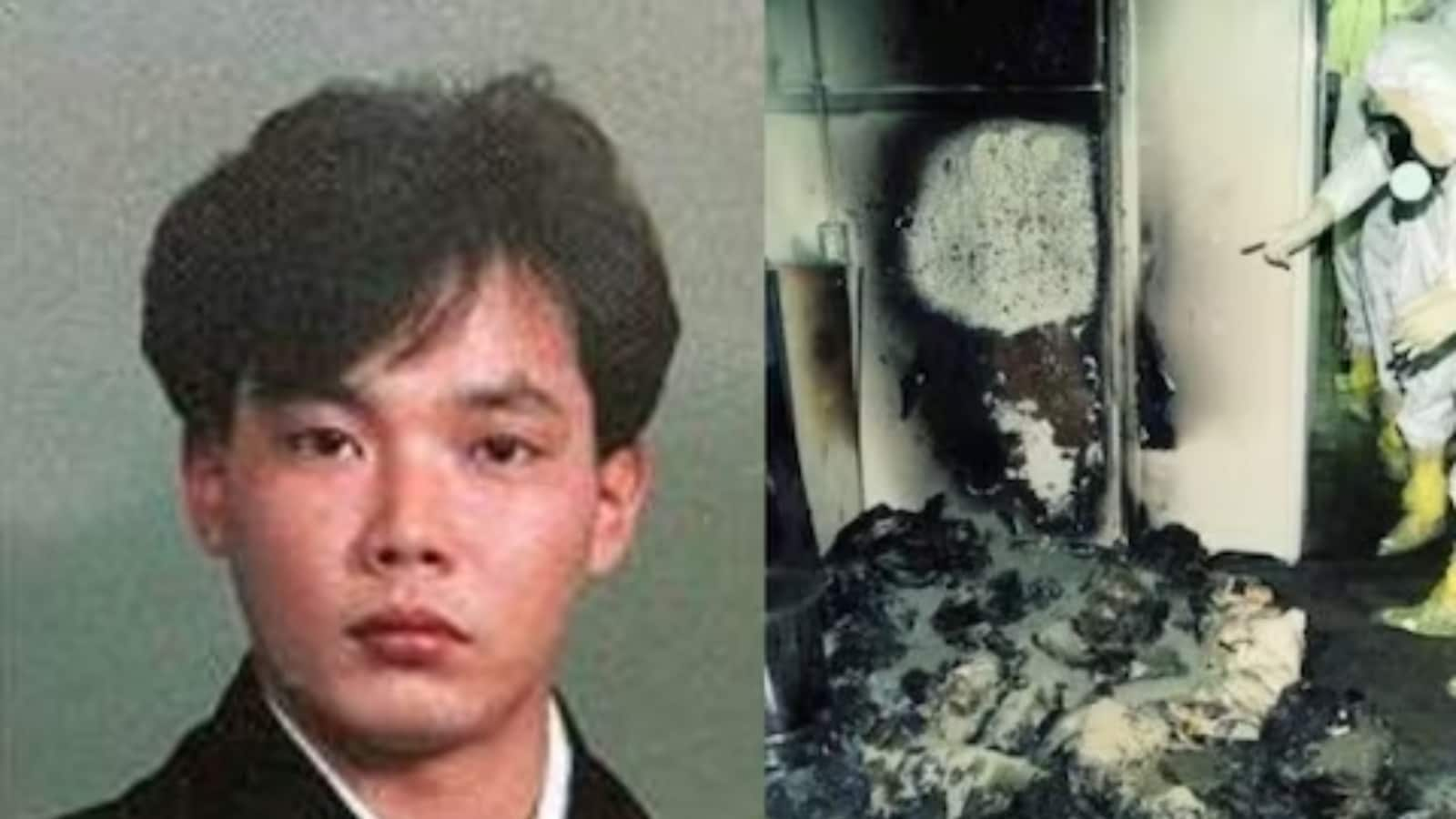Hisashi Ouchi's story is one of the most harrowing accounts of human tragedy in modern history, marked by an unprecedented nuclear accident that shocked the world. The incident, which occurred at a uranium processing plant in Tokaimura, Japan, left Ouchi with severe radiation injuries that were unlike anything ever witnessed before. This catastrophic event and its aftermath have sparked widespread interest and curiosity, with many searching for "hisashi ouchi pictures,," to understand the full extent of his ordeal.
The search for "hisashi ouchi pictures,," often stems from a desire to grasp the gravity of the situation and the consequences of radiation exposure at such an extreme level. Hisashi Ouchi, a technician at the JCO Tokaimura plant, was exposed to 17 sieverts of radiation—far exceeding a fatal dose—on September 30, 1999. The accident not only claimed his life but also raised critical questions about safety protocols, human endurance, and medical ethics.
While the graphic nature of "hisashi ouchi pictures,," may not be suitable for all audiences, understanding his story is essential to appreciating the risks associated with nuclear energy and the importance of stringent safety measures. This article delves deep into Ouchi's biography, the events leading to the accident, the medical treatment he endured, and the enduring lessons from his tragic experience. By shedding light on his life and legacy, we aim to provide valuable insights for those seeking to learn more about this devastating incident.
Table of Contents
- Biography of Hisashi Ouchi
- What Happened to Hisashi Ouchi?
- How Much Radiation Did Hisashi Ouchi Experience?
- The Role of Hisashi Ouchi Pictures in Understanding the Incident
- Why Did Medical Professionals Keep Hisashi Ouchi Alive for 83 Days?
- Hisashi Ouchi’s Medical Treatment and Its Challenges
- What Lessons Can We Learn from Hisashi Ouchi’s Tragedy?
- Ethical Dilemmas Surrounding Hisashi Ouchi’s Case
- How Did the Tokaimura Nuclear Accident Impact Japan?
- Are Hisashi Ouchi’s Pictures Publicly Available?
- The Aftermath of the Tokaimura Nuclear Incident
- Public Interest in Hisashi Ouchi Pictures
- How Did Hisashi Ouchi’s Family Cope with the Tragedy?
- What Actions Have Been Taken to Prevent Similar Incidents?
- The Lasting Legacy of Hisashi Ouchi
Biography of Hisashi Ouchi
Hisashi Ouchi was a 35-year-old technician working at the JCO Tokaimura uranium processing plant at the time of the accident. Born and raised in Japan, Ouchi was a dedicated worker and a family man. Known for his diligence and commitment, he was involved in handling uranium enrichment processes—a job that required precision and adherence to strict protocols.
Personal Details of Hisashi Ouchi
| Full Name | Hisashi Ouchi |
|---|---|
| Age at Time of Incident | 35 |
| Occupation | Technician at JCO Tokaimura Plant |
| Nationality | Japanese |
| Known For | Victim of the Tokaimura Nuclear Accident |
What Happened to Hisashi Ouchi?
The Tokaimura nuclear accident occurred on September 30, 1999, when a criticality accident took place during uranium processing. Hisashi Ouchi was one of the three technicians working at the plant when the accident happened. Due to improper protocols and human error, a massive amount of radiation was released, exposing Ouchi to 17 sieverts—an amount that is 340% higher than the fatal dose for humans.
How Much Radiation Did Hisashi Ouchi Experience?
Hisashi Ouchi experienced an unprecedented 17 sieverts of radiation exposure. To put this into perspective, just 5 sieverts is enough to kill a human within weeks. This catastrophic level of radiation caused severe damage to his internal organs, DNA, and immune system, rendering his body incapable of recovering naturally.
The Role of Hisashi Ouchi Pictures in Understanding the Incident
Images and records from the Tokaimura accident, including "hisashi ouchi pictures,,", have played a significant role in documenting the effects of extreme radiation exposure. While many of these photos are not publicly available due to their graphic nature, they have been crucial for medical research and understanding the impact of radiation on the human body.
Why Did Medical Professionals Keep Hisashi Ouchi Alive for 83 Days?
The decision to keep Hisashi Ouchi alive for 83 days was rooted in both medical research and ethical considerations. Doctors utilized advanced treatments, including skin grafts, blood transfusions, and stem cell transplants, in an attempt to save his life. However, the extent of his injuries made recovery impossible, leading to ongoing debates about the ethics of prolonging his suffering.
Hisashi Ouchi’s Medical Treatment and Its Challenges
Ouchi’s medical treatment involved a combination of cutting-edge techniques and experimental therapies. Despite the efforts of medical professionals, his body suffered from severe radiation burns, organ failure, and a complete breakdown of his immune system. This section explores the challenges faced by the medical team in treating such an unprecedented case.
What Lessons Can We Learn from Hisashi Ouchi’s Tragedy?
The tragedy of Hisashi Ouchi serves as a stark reminder of the risks associated with nuclear energy and the importance of adhering to safety protocols. The incident highlighted critical failures in training, oversight, and emergency preparedness, prompting significant changes in Japan’s nuclear safety regulations.
Ethical Dilemmas Surrounding Hisashi Ouchi’s Case
The prolonged medical treatment of Hisashi Ouchi raised numerous ethical questions. Was it right to continue treatment despite the impossibility of recovery? Did the medical interventions cause unnecessary suffering? These dilemmas continue to be discussed in the fields of medicine and bioethics.
How Did the Tokaimura Nuclear Accident Impact Japan?
The Tokaimura nuclear accident had a profound impact on Japan, leading to stricter safety regulations and increased public scrutiny of nuclear energy. The incident also sparked debates about the risks of nuclear power and the need for alternative energy sources.
Are Hisashi Ouchi’s Pictures Publicly Available?
While some images from the Tokaimura accident have been made available for research and educational purposes, most "hisashi ouchi pictures,," are not publicly accessible due to their graphic nature and the privacy concerns of his family. This has led to considerable speculation and interest among the public.
The Aftermath of the Tokaimura Nuclear Incident
The Tokaimura nuclear incident led to widespread changes in Japan’s nuclear industry. The plant was shut down, and new regulations were introduced to prevent similar accidents. The incident also had a lasting impact on the families of the victims and the community of Tokaimura.
Public Interest in Hisashi Ouchi Pictures
The public’s fascination with "hisashi ouchi pictures,," reflects a broader curiosity about the human impact of nuclear accidents. While these images can provide valuable insights, they also raise questions about the ethics of sharing such graphic content.
How Did Hisashi Ouchi’s Family Cope with the Tragedy?
Hisashi Ouchi’s family faced immense emotional and psychological challenges in the aftermath of the incident. This section explores how they coped with the loss and the public attention surrounding the case.
What Actions Have Been Taken to Prevent Similar Incidents?
In the wake of the Tokaimura accident, numerous measures were implemented to enhance nuclear safety. These include stricter regulations, improved training programs, and the adoption of advanced technologies to minimize risks.
The Lasting Legacy of Hisashi Ouchi
Despite the tragic nature of his story, Hisashi Ouchi’s legacy serves as a powerful reminder of the importance of safety, ethics, and accountability in the nuclear industry. His ordeal continues to inspire efforts to prevent similar tragedies and to ensure the responsible use of nuclear energy.


Detail Author:
- Name : Derick Schultz
- Email : volkman.bernardo@gmail.com
- Birthdate : 1996-01-26
- Address : 92144 Georgette Glen Apt. 554 Larkinmouth, VT 06482-6386
- Phone : +1-248-476-6181
- Company : Reilly Inc
- Job : Sawing Machine Setter
- Bio : Odit eaque soluta et adipisci doloremque delectus dolorem. Aliquam at ratione labore sint dolorum odit soluta. Quaerat necessitatibus aliquid enim consectetur non delectus.